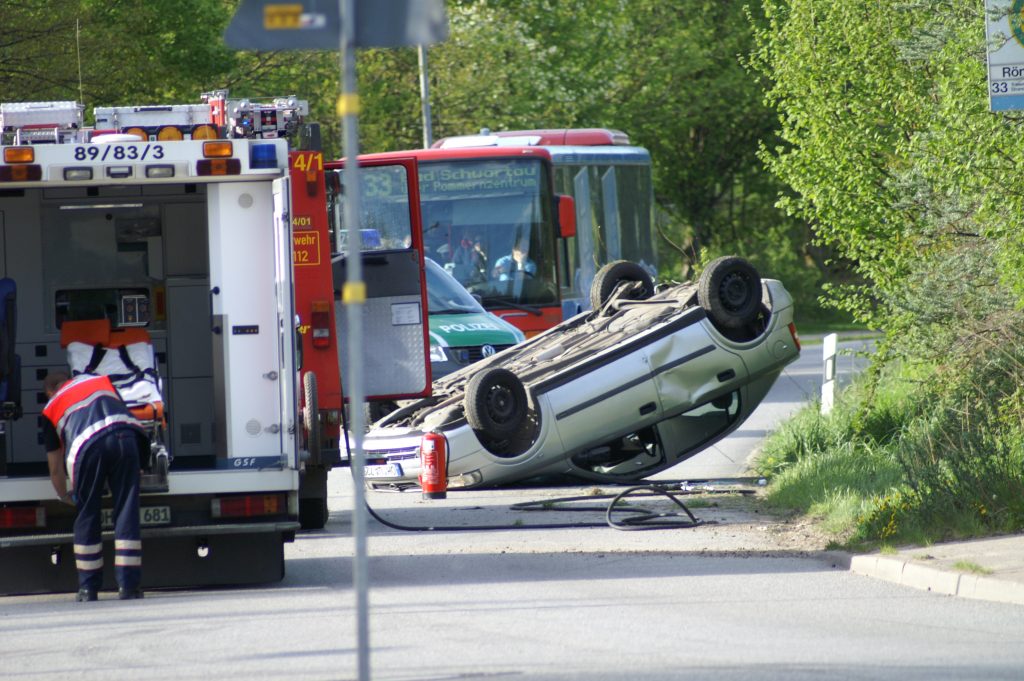 As the old saying goes, “accidents happen.” But, in personal injury lawsuits, like in many matters, another saying is more on point: “The devil is in the details.” And on that point the Second Circuit Court of Appeals reversed a summary judgment in favor of the City of West Monroe in a lawsuit brought by an elderly woman who claimed she was injured in a fall. The lawsuit against the city arose from purported negligence in maintaining the handrails of a handicap ramp located at the West Monroe court facility. The plaintiff, Bernice Walters, alleged that the handrail collapsed as she was using it to lower herself into her vehicle, which was in a parking space adjacent to the handicap ramp. Walters alleged that the city had constructive knowledge of the defective condition of the handrail. In response, the City of West Monroe moved for summary judgment and the motion was granted by the trial court.
As the old saying goes, “accidents happen.” But, in personal injury lawsuits, like in many matters, another saying is more on point: “The devil is in the details.” And on that point the Second Circuit Court of Appeals reversed a summary judgment in favor of the City of West Monroe in a lawsuit brought by an elderly woman who claimed she was injured in a fall. The lawsuit against the city arose from purported negligence in maintaining the handrails of a handicap ramp located at the West Monroe court facility. The plaintiff, Bernice Walters, alleged that the handrail collapsed as she was using it to lower herself into her vehicle, which was in a parking space adjacent to the handicap ramp. Walters alleged that the city had constructive knowledge of the defective condition of the handrail. In response, the City of West Monroe moved for summary judgment and the motion was granted by the trial court.
The trial court cited a lack of evidence that the city had actual or constructive notice of the condition of the handrail; there was insufficient circumstantial evidence to prove that the city knew of the defective handrail. Appealing the summary judgment, Walters asserted that the city violated the Americans with Disabilities Act by failing to maintain the handicap ramp in a manner consistent with the ADA regulations. This violation of the ADA allegedly satisfied the burden of proof for constructive knowledge, since the existence of relevant regulations suggests that the city should have known that their lack of maintenance was negligent.
Upon review, the appellate court accepted Walters’ theory of constructive knowledge and reversed the summary judgment. The appellate court examined the relevant Civil Code statute concerning public entities. See La. R.S. 9:2800. As a result, the court concluded that constructive knowledge does not require circumstantial evidence proving actual knowledge; instead, the standard for constructive knowledge is satisfied if a reasonable custodian or owner should have known of the defect while exercising reasonable care.
 Louisiana Personal Injury Lawyer Blog
Louisiana Personal Injury Lawyer Blog


 On the back roads of Louisiana it is not uncommon to see tractors and other farm equipment traversing the highway. If that farm equipment is involved in an accident with a car everyone involved might have a different story on how it occurred. If that happens it takes the best lawyers to help the court figure out who is at fault. The following case out of Livingston Parish shows how the courts deal with opposing views of fault in cases where cars and tractors collide.
On the back roads of Louisiana it is not uncommon to see tractors and other farm equipment traversing the highway. If that farm equipment is involved in an accident with a car everyone involved might have a different story on how it occurred. If that happens it takes the best lawyers to help the court figure out who is at fault. The following case out of Livingston Parish shows how the courts deal with opposing views of fault in cases where cars and tractors collide. Anyone who has purchased chicken from a grocery store knows that for some reason the packing always seems to leak. But what happens if that leakage occurs in a grocery store and you slip on it and hurt your back, is the grocery store responsible? The following case out of Washington Parish Louisiana clarifies the standards used by courts when addressing that question.
Anyone who has purchased chicken from a grocery store knows that for some reason the packing always seems to leak. But what happens if that leakage occurs in a grocery store and you slip on it and hurt your back, is the grocery store responsible? The following case out of Washington Parish Louisiana clarifies the standards used by courts when addressing that question.
 Maritime law provides special remedies for seamen who are injured at sea such as maintenance and cure. These remedies may be sought from the seaman’s employer or vessel owner. Maintenance is a daily stipend for day-to-day living expenses for seamen who fall ill or are injured while in service of a vessel. See
Maritime law provides special remedies for seamen who are injured at sea such as maintenance and cure. These remedies may be sought from the seaman’s employer or vessel owner. Maintenance is a daily stipend for day-to-day living expenses for seamen who fall ill or are injured while in service of a vessel. See